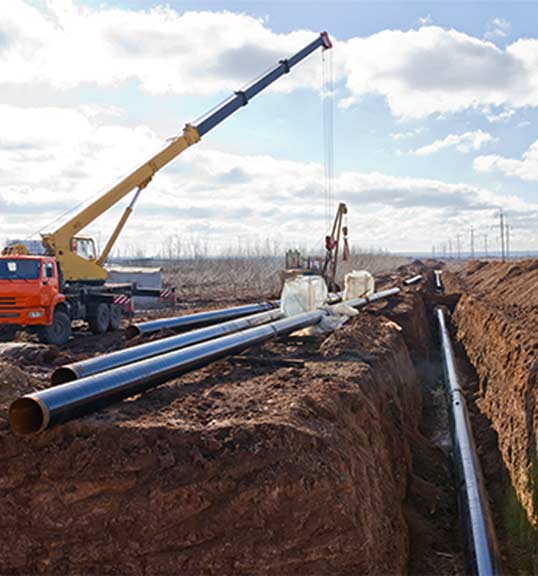If you are an owner of a condominium that is more than 10 years old and located near salt water, you have probably incurred special assessments for repairs to your building for cracked or spalled concrete due to corrosion. If you haven’t experienced the restoration process, you will most likely be introduced to costly concrete restoration in the immediate future because the corrosion of reinforcing steel in concrete is inevitable. Major concrete restoration of buildings such as condominiums and high rise structures is anticipated to be the fastest growing segment, and the most costly expenditure, in the entire construction industry over the next 5-10 years in Florida. Understanding the corrosion process and taking steps to prevent it can save your association a lot of headaches, inconvenience, and money. This article focuses on the application of cathodic protection as a method of preventing corrosion of concrete balconies.
Steel is a man-made substance produced from iron ore. The energy added in the refining process is unstable, and when given a suitable environment, it will release the unstable energy and return to its natural state of iron ore. When immersed in an electrolyte, such as contaminated concrete, soil or water, metals produce a current which causes ions to leave their surface. The area of metal where the current is discharged and corrosion occurs is called anodic. The term for a noncorroding area on steel is cathodic.
Corrosion of steel in concrete occurs when the passive state of the steel is altered. When your building was constructed and poured with “new” concrete, the pH of the concrete was approximately 12-13. The high pH offers a protective environment for the passive steel, but there are two mechanisms that can change the passive state: chlorides (salt contaminates) and carbonation. Salt Contaminates: The oceans along the Florida coastline contain the salt that produces a continuous layer of moisture on the steel. Once the salt comes in contact with the steel, corrosion begins.
Carbonation: The second mechanism which causes corrosion of steel and the deterioration of the concrete is the chemical reaction of carbon dioxide with the concrete to produce carbonates. The reaction of carbon dioxide with alkaline hydroxides in the cement lowers the pH of the concrete environment around the steel, and once again, the corrosion process is initiated. Once the reinforcing steel begins to corrode, layers of corrosion products (rust) form on the surface of the steel, causing a tremendous amount of pressure within the concrete. The pressure eventually exceeds the tensile strength of concrete and the surfaces of the concrete rupture, producing spalls on the surfaces and major cracks along the balcony edges.
Early warning signs of concrete failure are very obvious. There are hair-like cracks in the surfaces and rust spots bleeding from the concrete. As the corrosion becomes more aggressive and the concrete disbands from the steel, hollow sounds can be detected on concrete surfaces, lumps form under a carpet and/or loose tile will be noticed. The corrosion is not limited to concrete balconies. It is more often found on vertical surfaces such as columns, walls, beams and even penetrates under sliding glass doors, extending 2-3 feet inside condominium units. When spalling of concrete occurs, corrosion activity has advanced to an extreme level and a major concrete restoration project is just around the corner.
Concrete restoration traditionally starts with a field inspection or a corrosion evaluation of the facility by the qualified engineer. After assessing the extent of damage and determining the scope of work, a set of written specifications is prepared. This is usually done by a structural engineer who will bid the project specifications to prequalified concrete restoration contractors. Once the bidding process is completed, the board will contract for the work to begin. Many projects take months to complete due to the required excavation of the concrete to expose the rebar and to conduct the necessary repairs to the reinforcing steel. During the period of restoration, the owner endures noise from jackhammers vibrating throughout the building, dust from removing paint and stucco coating, sandblasting and a total disruption of daily living.
Because of the tremendous expense involved in restoring reinforcing steel in concrete, condominium boards are becoming more proactive in the battle against corrosion. One method of corrosion prevention is the application of cathodic protection to buildings that have standard cast in place rebar construction, post-tensioning or prestressed construction.
Condominiums are now applying cathodic protection as part of their preventive maintenance to stop corrosion and to reduce future restoration resulting from rebar corrosion. It has been used to prevent corrosion for more than 70 years in the oil, natural gas, and power industry. Also, the government is requiring all steel underground storage tanks in the United States to be protected from corrosion with cathodic protection by the end of 1998. Other applications for cathodic protection include water heaters in your home, boats, marine engines, municipal wastewater treatment facilities, and water tanks.
Cathodic protection is an electrochemical method of preventing corrosion and is being installed on various condominiums and other concrete structures for corrosion protection. One method of cathodic protection utilizes thin layers of zinc anode that are installed on the floor or ceiling of a balcony and connected to the steel rebar. When two dissimilar metals, zinc anode (1.1 volts) and steel rebar (.5 volts) are connected, the metal with the higher voltage (zinc) will generate a small electrical current from the zinc to the steel rebar.
Through a series of electrochemical reactions at the surface of the steel, corrosion activity will be arrested. The corrosion protection system stops the corrosion process and eliminates deterioration of steel rebar and subsequent damage to concrete surfaces. This electrochemical method of corrosion prevention is becoming a standard part of preventive maintenance for condominiums and can be applied at the time of new construction before concrete damage has occurred. It can also be applied on buildings 10-15 years old or after a restoration project has been completed to stop future corrosion.
Applying a cathodic protection system can reduce the overall cost of present and future concrete restoration projects resulting in thousands of dollars saved to the homeowner.





